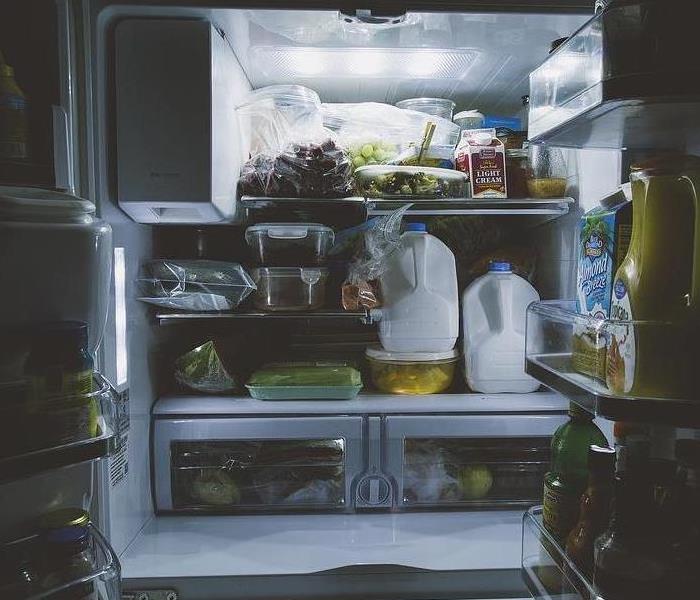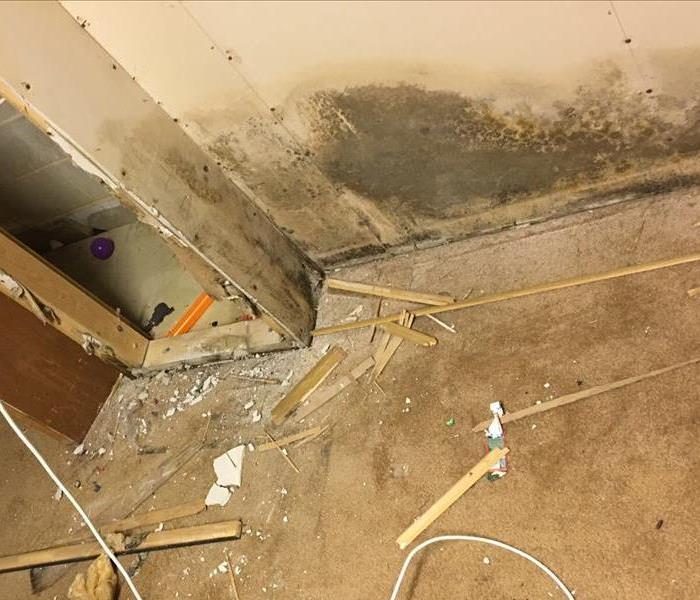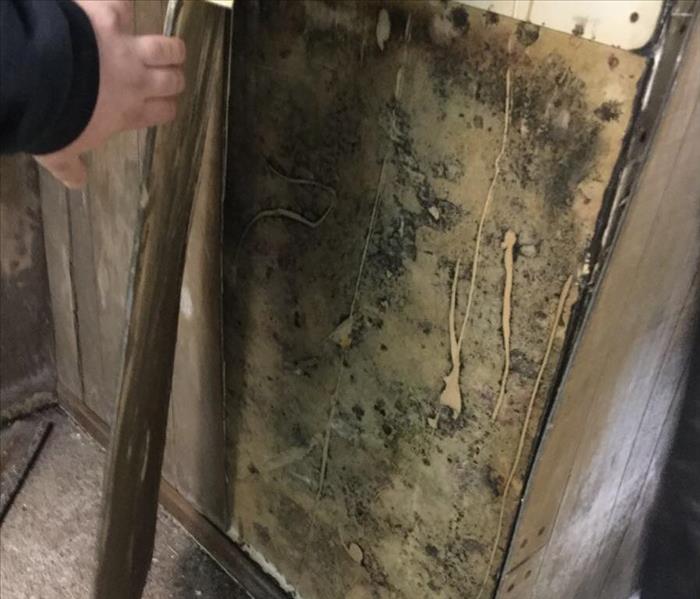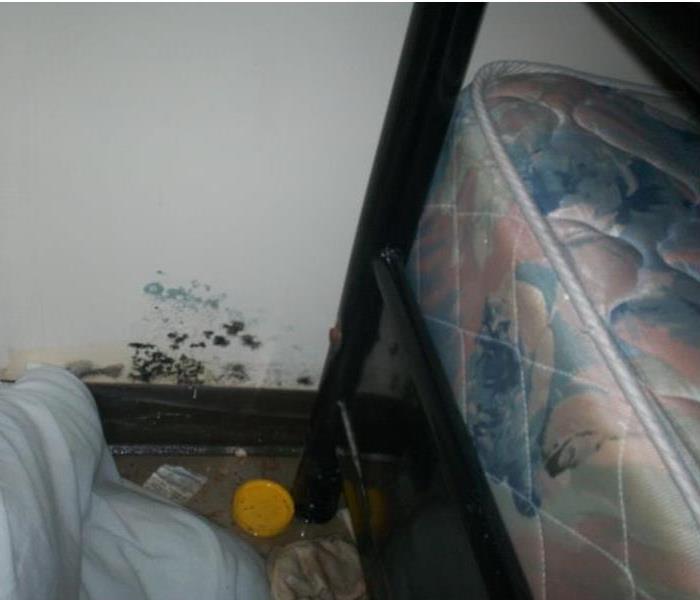Archived Mold Remediation Blog Posts
Different Mold Remediation Stages for Wilmington Properties
10/17/2024 (Permalink)
 Call SERVPRO of Wilmington if you suspect you have a mold issue.
Call SERVPRO of Wilmington if you suspect you have a mold issue.
Planning for Mold Removal for Your Wilmington Premises
Mold develops when there is abundant moisture around organic materials. That is why areas such as under the sink and near bathtubs are mold hotspots. Such moisture accumulation happens over a long time. However, a significant water leak when you are out enjoying the Clifford Brown Jazz Festival or Brandywine Festival of the Arts can saturate enough areas of your property to saddle you with mold problems for months. Proper mold remediation takes several steps, as well as good planning.
The first step in mold remediation for Wilmington properties is moisture management since moisture triggers the microbial processes that lead to mold contamination. This step is standard whether you have a Victorian or Colonial home in historic districts like Quaker Hill and Brandywine Village or a luxury apartment on the waterfront along the Christina River. Hidden moisture within walls, beneath carpets, and other enclosed areas poses a continued threat, so you need to identify concealed moisture.
Ways SERVPRO® detects hidden moisture
- Using penetrative moisture meters
- Using thermal cameras
- By opening up the enclosed areas
Depending on the moisture situation and the level of mold growth, you may need to tear down some areas to remove heavily contaminated materials. Establishing containment before such teardown is essential to prevent moldy residues and spores from spreading to unaffected property areas. The supplies you need for creating airtight containment, like 6-mil plastic sheets, PVC pipes, and tape, are readily available in local stores, including Wagner Hardware and Pax Ace Hardware. SERVPRO crews add a touch of experience, ensuring a smooth setup.
Managing drying
Many structural materials and furniture affected by water damage can survive mold through thorough cleaning and drying. Since drying requires air movement to hasten evaporation, safeguards are necessary to minimize the particulate matter released into the air. Our SERVPRO teams use low-airflow dehumidifiers when drying or setting up an air filtration device to mop up the particulate matter and odor molecules in the air. Sometimes, additional deodorization with Ozone or hydroxyl generators may be necessary to eliminate traces of musty odor.
SERVPRO of Brandywine / Wilmington professionally manages mold remediation. Call us at (302) 762-8080.
Confined Space Mold Mitigation
11/27/2018 (Permalink)
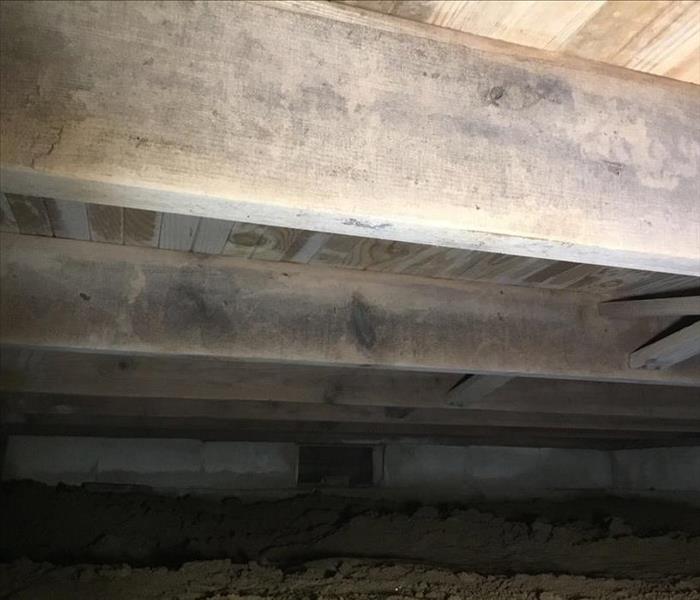 Confined Space Mold Mitigation
Confined Space Mold Mitigation
Mold likes to grow in dark, damp places that have a food source. Mold absolutely thrives in this environment. Mold can sometimes be difficult to find. SERVPRO of Brandywine / Wilmington sees mold every day in homes and other properties. One of the most difficult places we mitigate mold is from under a home or foundation. Sometimes the area can be so small and difficult to manipulate our crews inside those small areas. These areas not only are confined space but they are awkward to do the job properly. In this photo you can see the beams of the belly of the home that have mold growing on them. You can also see how small the area is between the beans and floor. The floor is also a dirt floor which makes it another challenge as well.
Mold on Shelving
11/1/2018 (Permalink)
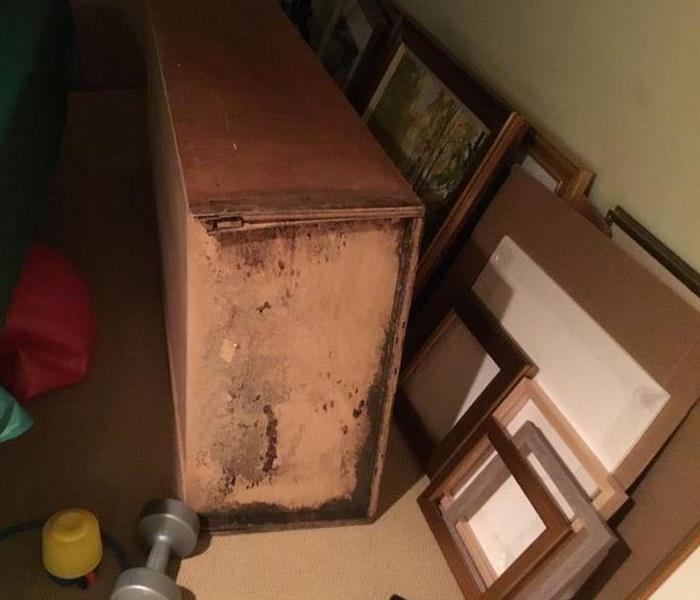 Mold on Shelving
Mold on Shelving
Mold can be hidden for some time until it gets noticed. This picture shows a book shelf that was on the floor of a basement. The basement a few months prior sustained some water infiltration. The homeowner called upon another to mitigate their loss. Only two months later the odor was so pungent that they called SERVPRO of Brandywine / Wilmington to help figure out where the odor was coming from. It took only minutes for our estimator to locate the source. It appears the bookshelf was never disconnected properly during the initial water loss. As a result, microbial growth took over the bottom of the shelving. SERVPRO was able to correct the lack of drying and kill the growth on the content. Although we stopped the growth the shelf was permanently stained from the mold.
Mold Tips
10/19/2018 (Permalink)
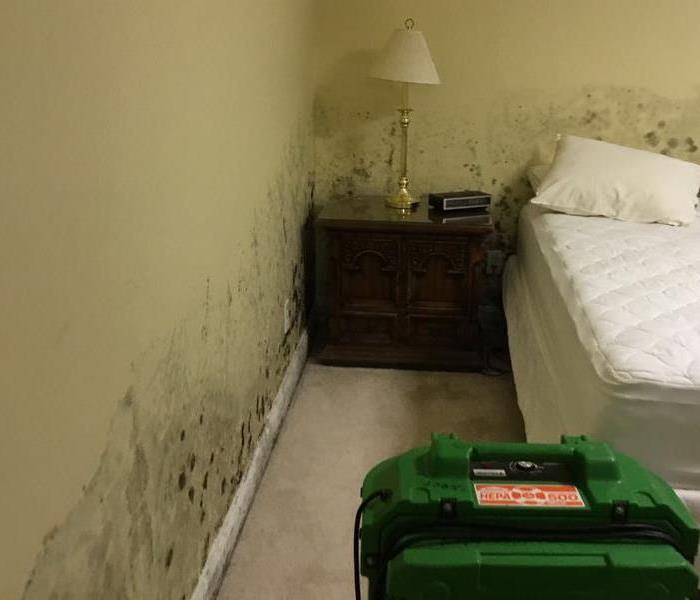 Mold growth on and in wall
Mold growth on and in wall
Mold can be spotted almost anywhere. Mold is an allergen that can lead to coughing, running noses and itchy eyes. It consists of microscopic spores that exist in our air space both inside and outside, and thrives in warm, moist, humid environments. Many buildings that are seasonal, like schools, tend to leave the air conditioning off during the summer, but that can lead to some unwanted mold growth for the starting school year. For more information on black mold and mold removal and remediation, check out this https://www.SERVPRO.com/black-mold
The word mold can be scary but it is really about taking control of it and mitigating it properly and quickly. Before any mold clean up can begin the source of the moisture or water must be corrected. If not then the mold may come back. It is always best not to disturb the mold as the spores may become airborne and lead to additional concerns. It is a good idea to consult with a professional mold remediation company like SERVPRO of Brandywine/Wilmington at (302) 762 - 8080
Microbial Growth
10/19/2018 (Permalink)
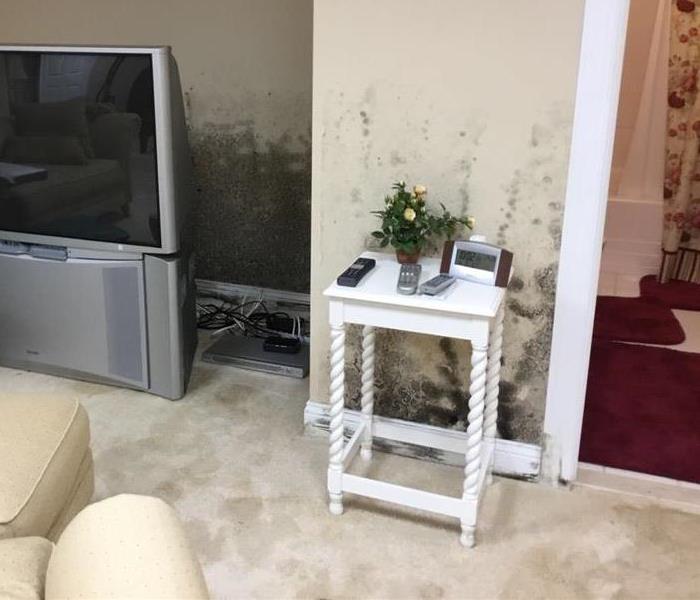 Microbial Growth
Microbial Growth
Microbial growth in your home is nothing fun to deal with. You may have had a simple toilet/shower leak, even a tub or small dishwasher leak and thought you cleaned all the water up quickly. Without a professional to check the moisture levels in walls, flooring, and cabinetry etc. you may have missed moisture. SERVPRO of Brandywine/Wilmington can help with these psychometric readings. Conditions like these can create a feeding ground for microbial growth or mold. You may not see it visible at first, but notice an odd odor. By the time you notice the growth, many things may no longer be able to be restored, but must be replaced. Causing more headache and more money! It takes as little as 48 hours for mold spores to begin to grow.
Breathing Easy
9/27/2018 (Permalink)
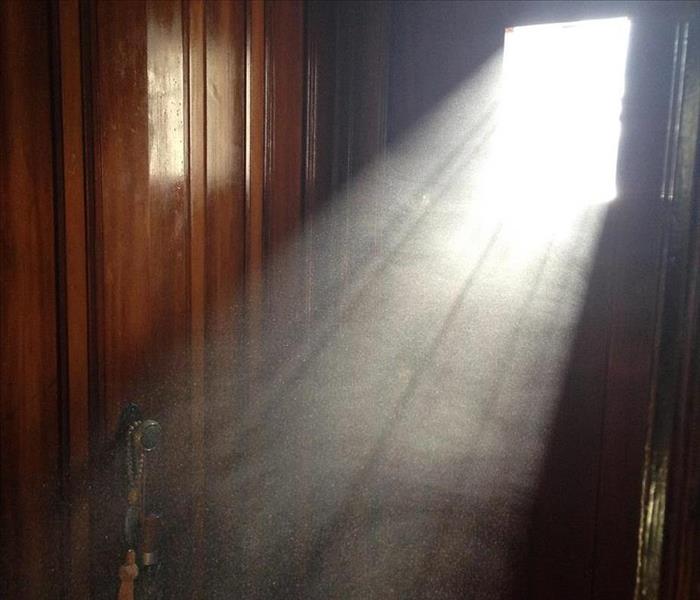 Article submitted by Amanda H.
Article submitted by Amanda H.
Breathe Easy: A Guide to Improving Indoor Air for Your Child’s Health
Your home’s indoor air quality is likely far worse than outside. Your walls, roof and windows can trap everything from dust mites to mold and continually circulate them through the air. These and other irritants can have long-term effects on your children’s health. The EPA reports that respiratory issues, allergies and even cancer can all result from breathing in contaminated air.
Is your child at-risk?
No matter where you live, your air is not completely clean. However, sensitive children may experience negative side effects of poor air quality. Mold is perhaps the biggest culprit. The American College of Allergy, Asthma & Immunology explains that mold allergy symptoms mimic those of other respiratory concerns. Your child may experience coughing, wheezing, sneezing, chronic nasal congestion and irritated eyes.
First let’s clear the air!
Fortunately, there are ways to improve your home’s air quality and help your family breathe easier. You can reduce allergens by keeping pets out of the allergy-prone child’s bedroom. Never allow anyone to smoke in your home and don’t store seasoning wood indoors as it can contain mold spores. Controlling moisture will further reduce mold from flowing through the air. Make sure your exhaust fan and vents in the basement, attic, crawlspace and over the oven are functional and route your dryer vent outdoors. If you have any leaks, fix them immediately and remove any water-damaged materials from the home.
Have your HVAC system serviced at least twice per year. Proper maintenance of your HVAC system also requires that you periodically change the filter, so choosing the right-size filter when making a replacement is essential. A HEPA Filter in your vacuum will further reduce debris from swimming through the air and into your children’s lungs.
Remember ALL the soft surfaces...
It isn’t just air that can hold on to pollutants. The soft surfaces in your home should be cleaned thoroughly at least once per month as allergens can pile up quickly. Wash the curtains, pillowcases, and throw blankets and make sure to vacuum carpets and area rugs carefully. Nationwide Children’s Hospital notes that dust mite allergies may be mitigated in part by regularly washing sheets and adding an allergy cover to your child’s bed.
Bring the outside in
A simple and effective method that will impact air quality is to decorate your home with succulent and other types of plants that naturally filter out pollutants, including volatile organic compounds (VOCs). VOCs are often found in air fresheners, bleach and other harsh cleaning chemicals. American Home Shield recommends aloe vera and spider plants. Raising your windows a few times each week will help, too. Open windows on either side of your home to encourage airflow and remember that the inside air is actually dirtier than the outside air.
Further reduce pollutants
To further reduce pollutants, consider investing in an air purifier, especially if you have pets or children with allergies. This will act as a secondary filter as will installing a dehumidifier in the bathrooms, basement and other areas prone to moisture. Himalayan pink salt lamps may also be beneficial as, in addition to being an exceptional source of soft light, these fashionable home decorations are hygroscopic, meaning they attract water molecules that contain dust and other allergens.
All of the above tips are exceptional ways to clean the air inside your home but there is no substitution for actually letting your child spend some time outdoors. Set aside a few afternoons each week for fun family activities such as birdwatching, riding bikes or even backyard camping. While these activities pose their own concerns – bug bites, sunburn, etc. – they will give your kids an opportunity to breathe fresh air, which can help clean their lungs and boost their overall health.
While we all like to believe our children are safe at home, the reality is that too much time indoors can actually make your child sick. Pay attention to your air quality and take steps to reduce allergens and irritants. Your children’s lungs will thank you and you’ll sleep easier knowing that dust mites and dander won’t disrupt their dreams.
Springtime Preparation
3/1/2018 (Permalink)
Spring is on it's way! As the weather warms up and the seasons change, we should prepare for the spring time as best we can. Here are some tips on how to get your home ready for this spring season!
Check/Service your Lawn Care Equipment. Cleaning up your lawn mower and changing the oil helps you to start fresh once its time to put it to use again.
Clean Patio Furniture. Dust off your outdoor tables and wash your patio cushions. You are going to want them ready for relaxing once the weather is nice!
Clear Your Gutters. After the fall season and then the wintery weather, your gutters probably could use a little attention. Clear out anything in your gutters to prevent mold or weeds growing up there.
Change Filters. HVAC filters should be checked/changed seasonally in order to ensure proper air quality in your home.
Clean Refrigerator
11/29/2017 (Permalink)
When was the last time that you found something in your fridge that was expired or needed to be thrown out? It is fairly common to find some perishable and/or questionable items in the back of your fridge that have been hidden behind some condiments or left overs for too long.
Once a week, your refrigerator should be tidied up by wiping spills and surfaces. Any sticky spots on containers should be wiped up as well. To prevent bacteria growth, the fridge should be cleared out, thoroughly cleaned, and organized. Products should be checked for expiration dates and mold before going back in the refrigerator.
It is important to keep your fridge clean and organized so that your items can remain bacteria and mold free!
Mold Inspections
11/2/2017 (Permalink)
Because mold can be hidden in walls, floors, ductwork, it can be hard to detect until it has already affected your home. Janet bought her first home and was so excited to move in. It took months of enduring a musky odor before she discovered her mold problem. Janet was so surprised that an inspector came across mold growth in her home because she kept the entire house spotless. Sometimes prevention is the strongest fight against mold growth. Dehumidifiers and air conditioners help keep homes dry and strengthen the ventilation throughout the area and should be used when humidity is high or living conditions are damp. Air ducts should be checked every once in a while as well. Ducts go unchecked in many homes for very long periods of time, which sometimes allows undetected buildup and mold growth.
Mold Inspection
10/19/2017 (Permalink)
When SERVPRO is inspecting a home or building for mold, there is a variety of key indicators we look for. Visible mold growth or the smell of mold or musty smells are the most apparent signs of mold SERVPRO looks for. In different situations, SERVPRO of Brandywine/Wilmington technicians will check for dampness and mold growth on carpet pads, carpets, we conduct inspections throughout the flooring, walls, and sub-floors. Moisture in the air and temperature within the home/building are monitored and measured by our technicians in certain scenarios as well. If we have found that mold growth is present within the facility, our mitigation process of the mold growth is the next step in our process. If there is no mold growth detected but there is a musty odor in the room which caused for the question and inspection of mold, SERVPRO is able to proceed with their deodorization services instead.
Healthy Home
10/19/2017 (Permalink)
Along with checking for mold and making sure you are aware of the signs that could indicate mold in your home, you should make sure you are keeping your home a healthy environment in as many other ways you can. You should ask yourself a few questions in regard to your environment:
- Do you smoke inside your home?
- Is the ventilation and exhaust fans between your laundry room, kitchen, and bathroom adequate?
- When was the last time you changed your air filters?
- When was the last time you changed the filter or bag to your vacuum?
- Is your laundry done with bleach or ammonia?
- Is your gas stove and fire place checked every year for emissions?
- Was your home build before 1977? If so, has it been checked for led based paint?
- Do your bathrooms have carpet?
The Growth of Mold
10/13/2017 (Permalink)
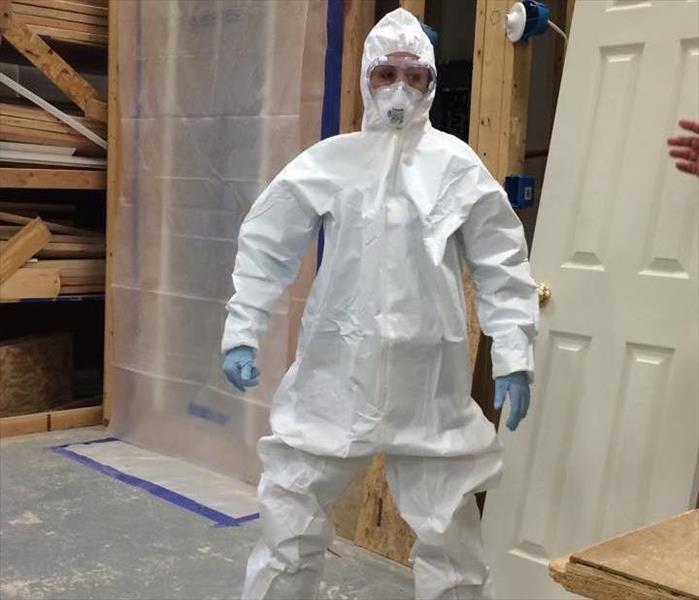 Ready for Mold Remediation
Ready for Mold Remediation
Whether its a storm, plumbing malfunctions, or equipment mishaps, when water affects your home, the risk of encountering mold growth in the near future runs much higher. If the level of humidity is not controlled in the damaged area, moisture is absorbed into the environment and mold spores will begin to multiply. SERVPRO works in a timely manner because we are well trained in the importance of mold prevention and water extraction. Whether it be after a water damage or simply for your awareness, be alert for:
- Visible Mold
- Strong Musty Odors
- Evidence of Current Moisture Problems
- Evidence of Previous Moisture Problems
- Excessive Humidity
- Dampness
SERVPRO technicians are highly trained and knowledgeable about water damage, moisture in an environment, and mold and are able to bring your home back to the condition it was in before any damage occurred.
The Source of Water Damage & Possible Mold
10/13/2017 (Permalink)
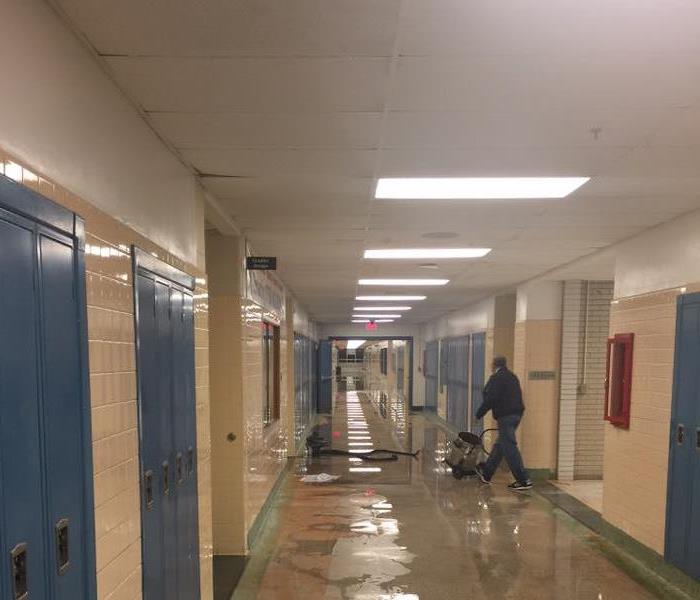 Water in Hallway
Water in Hallway
Mold can grow on many materials especially after a water damage.
Some Examples of Possible Materials of Mold Growth:
- Wallpaper
- Drywall
- Paint
- Carpet
- Adhesives
- Wood
- Fabrics
- Paper Products
- Food
The byproduct of mold is the musty smell that grows more and more apparent as the mold spreads. Environments with a lot of moisture are the most common cause of mold growth, which includes environments that have encountered a water damage. After mold remediation/water remediation has been conducted, the job is not finished. The source of water and moisture that creates the perfect feeding ground for mold must be addressed to prevent future mold growth.
Here is a water damage in a local school that our SERVPRO restored. This school is a perfect example of the importance of finding the source of water damage and moisture. There was a large leak in the plumbing system that caused the water damage but later it was discovered that the old plumbing system had started to fail and water was unable to easily flow through the pipes and had been slowly affecting the lower level bathrooms for some time. If the school had not investigated the source of the water damage and moisture build up over time, they would have encountered this situation again, and a great possibility of mold later on.






 24/7 Emergency Service
24/7 Emergency Service







